| WAGR E class | |||||||||||||||||||||||||||
|---|---|---|---|---|---|---|---|---|---|---|---|---|---|---|---|---|---|---|---|---|---|---|---|---|---|---|---|
 E2 at Geraldton, 1886 | |||||||||||||||||||||||||||
| |||||||||||||||||||||||||||
| |||||||||||||||||||||||||||
| |||||||||||||||||||||||||||
| |||||||||||||||||||||||||||
The WAGR E class was a two-member class of 2-4-4-2T double-Fairlie locomotives operated by the Western Australian Government Railways (WAGR) between 1881 and 1892.
| WAGR E class | |||||||||||||||||||||||||||
|---|---|---|---|---|---|---|---|---|---|---|---|---|---|---|---|---|---|---|---|---|---|---|---|---|---|---|---|
 E2 at Geraldton, 1886 | |||||||||||||||||||||||||||
| |||||||||||||||||||||||||||
| |||||||||||||||||||||||||||
| |||||||||||||||||||||||||||
| |||||||||||||||||||||||||||
The WAGR E class was a two-member class of 2-4-4-2T double-Fairlie locomotives operated by the Western Australian Government Railways (WAGR) between 1881 and 1892.
The E-class engines were built by Avonside Engine Co, Bristol in 1879 for the WAGR's Northampton railway line, the first government railway in Western Australia, which opened that year.
In line with Avonside's practice for assigning build numbers to Fairlie locomotives, each end received a separate serial number. However, after a collapse in the price of lead, the heavy mineral traffic for which they were purchased dried up and they were placed in store. One entered service in 1881, with the second remaining in store until 1885 when a M class had to be withdrawn for overhaul. [1] [2] When engine class designations were introduced in 1885 and became the E class, numbered E20 and E7.
In 1888, both were transferred to Fremantle Railway Workshops for use on the Eastern Railway. In 1891, E20 was cut up with the parts from one half with adapted to drive machinery at the Fremantle Railway Workshops, the other half was converted into a 2-4-2T tank engine as F20 in February 1893 for use at Fremantle Long Jetty. It was sold in February 1899 to Jarrah Timber & Wood Paving, Worsley and withdrawn by March 1905. [3]
E7 was withdrawn in 1895 and sold to the Canning Jarrah Timber Company for use on the Upper Darling Range railway. [4] It was scrapped in 1897. [5]
The E-class designation was reused for the WAGR E class locomotives that were introduced in 1902. It was reused again in the 1960s when an MRWA E class diesel locomotive was acquired.

The WAGR E class were a class of 4-6-2 steam locomotives built for the Western Australian Government Railways (WAGR) by English manufacturers Nasmyth, Wilson & Co, Vulcan Foundry and North British Locomotive Company, from 1902. The locomotives provided a huge increase in locomotive power available to the WAGR and were the mainstay traction of WAGR passenger services for two decades. The Es class was the name given to a reconstruction of all but four of the class carried out between 1924 and 1925.

The WAGR D class was a class of 4-6-4T tank locomotive operated by the Western Australian Government Railways (WAGR) between 1912 and 1964.

The WAGR Dm class was a class of 4-6-4T tank locomotive operated by the Western Australian Government Railways (WAGR) between 1945 and 1971.
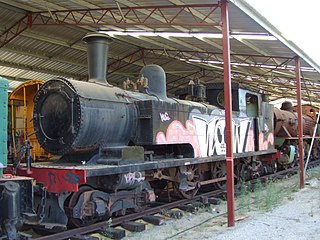
The WAGR N class was a class of steam locomotives operated by the Western Australian Government Railways (WAGR) from 1896 until 1960.
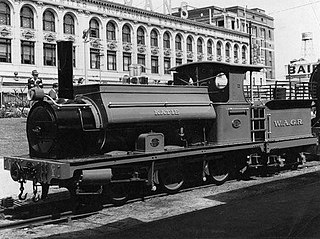
The WAGR C Class was a class of steam locomotives built by Robert Stephenson and Company for the Western Australian Government Railways in 1880 to the same design as the NZR F class.

The WAGR S class was a class of 4-8-2 steam locomotives built by the Midland Railway Workshops between 1943 and 1947 and operated by the Western Australian Government Railways (WAGR).
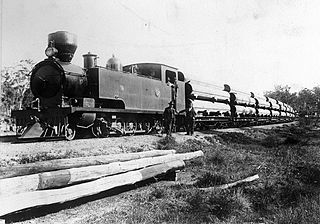
The K-class was a class of 2-8-4T steam locomotives of the Western Australian Government Railways

The H class was a class of two steam locomotives operated by the Western Australian Government Railways (WAGR) introduced in 1889.
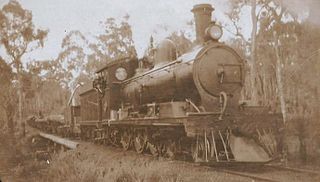
The WAGR J class was a three-member class of 4-6-0 steam locomotives operated by the Western Australian Government Railways (WAGR) between 1892 and 1924 before seeing further use with the State Saw Mills until the early 1930s.

The WAGR Q class was a six-member class of 4-6-2T tank engine steam locomotives operated by the Western Australian Government Railways (WAGR) between 1896 and 1925.

The WAGR Q class was a two-member class of 4-6-0 steam locomotives operated by the Public Works Department (PWD) and later Western Australian Government Railways (WAGR) between 1928 and 1953.

The WAGR F class was a class of 4-8-0 heavy goods steam locomotives operated by the Western Australian Government Railways (WAGR) between 1902 and 1970.
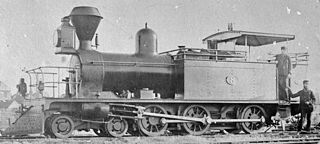
The WAGR B class was a class of 4-6-0T tank locomotives operated by the Western Australian Government Railways (WAGR) between 1884 and 1959.
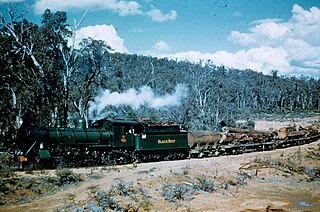
The WAGR C class was a class of light axle load steam locomotives operated by the Western Australian Government Railways (WAGR) between 1902 and 1961. A total of 22 were built in two batches.
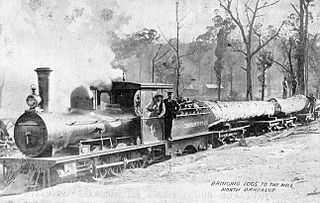
The WAGR M class was a two-member class of 2-6-0 steam locomotives operated by the Western Australian Government Railways (WAGR) between 1876 and 1911.

The WAGR M class was a class of 2-6-0+0-6-2 Garratt-type articulated steam locomotives operated by the Western Australian Government Railways (WAGR) between 1912 and 1955. A total of 13 were built by Beyer, Peacock & Co, Manchester in two batches.

The WAGR A class was a class of 2-6-0 steam locomotives designed by Beyer, Peacock & Co and operated by the Western Australian Government Railways (WAGR) between 1881 and 1955.

The WAGR U class was a single member class of 0-6-0T tank locomotive operated by the Western Australian Government Railways (WAGR) from 1904 until 1940.

The WAGR D class was a single member class of 0-4-0ST tank locomotive operated by the Western Australian Government Railways (WAGR) from 1884 until 1903.
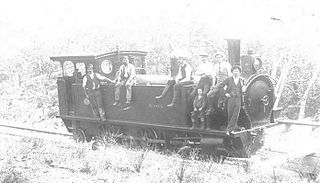
The WAGR K class was a single member class of 0-6-2T tank locomotive used intermittently by the Western Australian Government Railways (WAGR) between 1891 and 1926.
![]() Media related to WAGR E class (1879) at Wikimedia Commons
Media related to WAGR E class (1879) at Wikimedia Commons